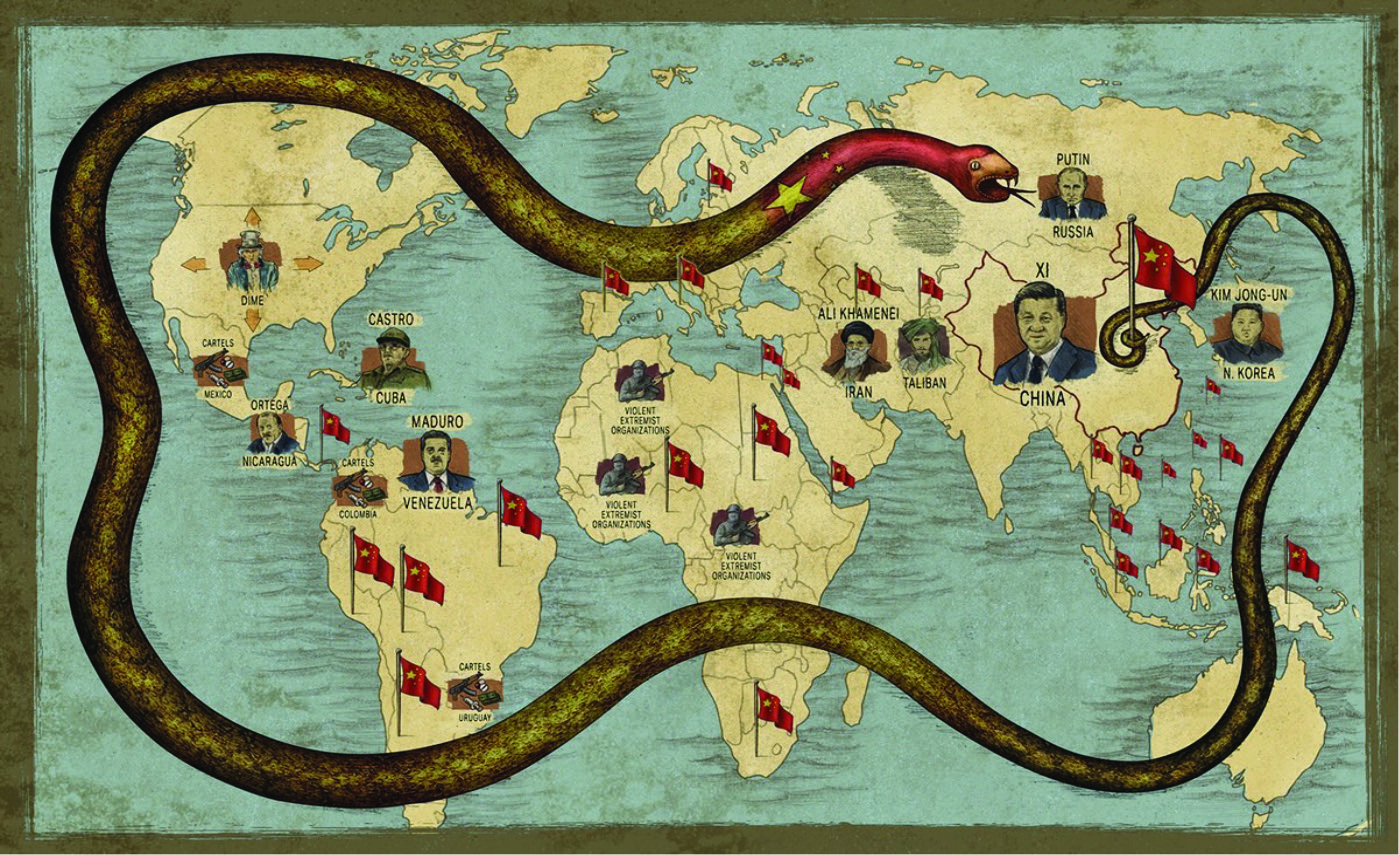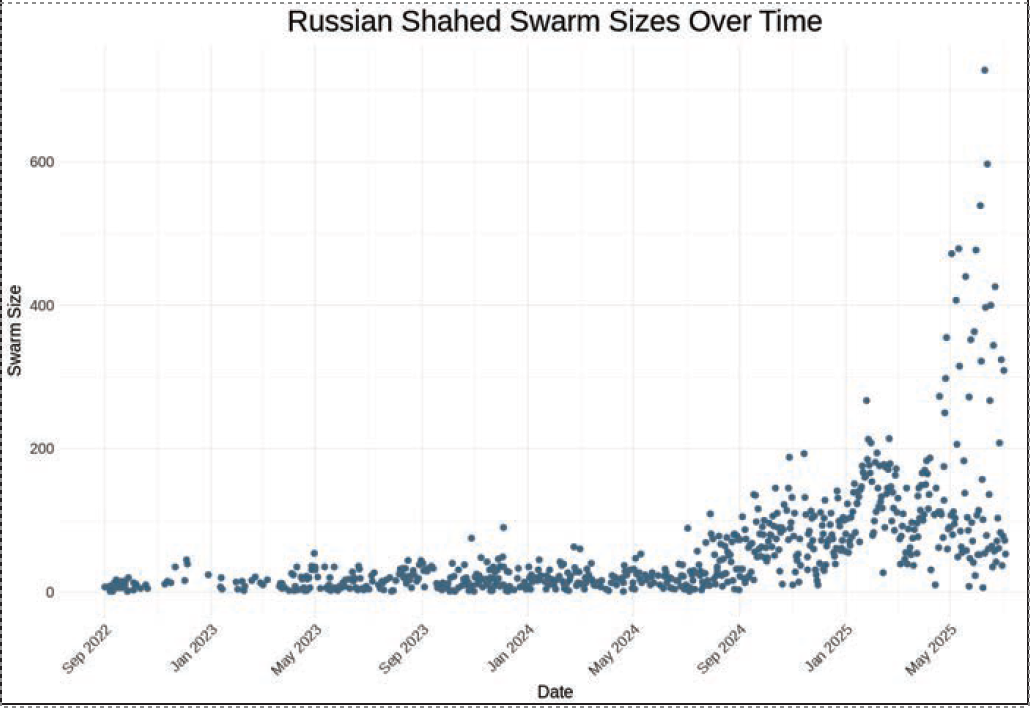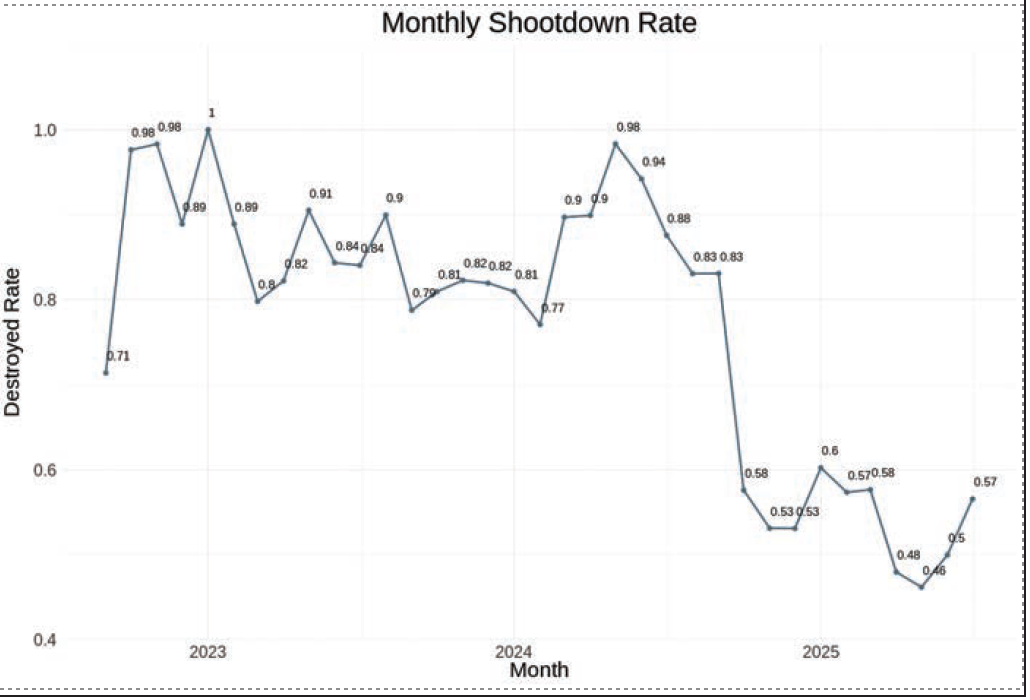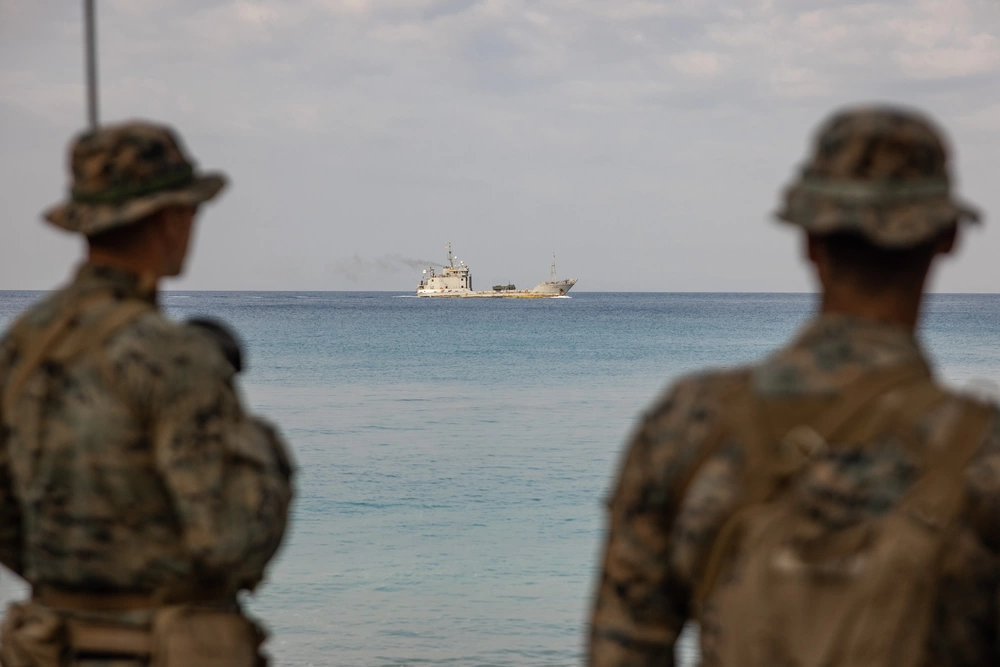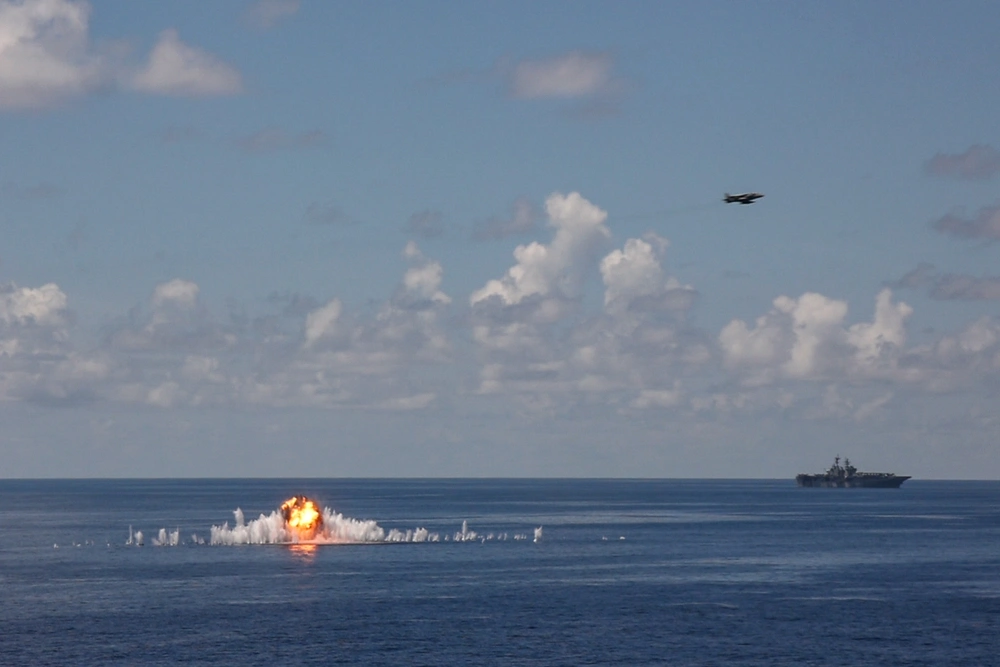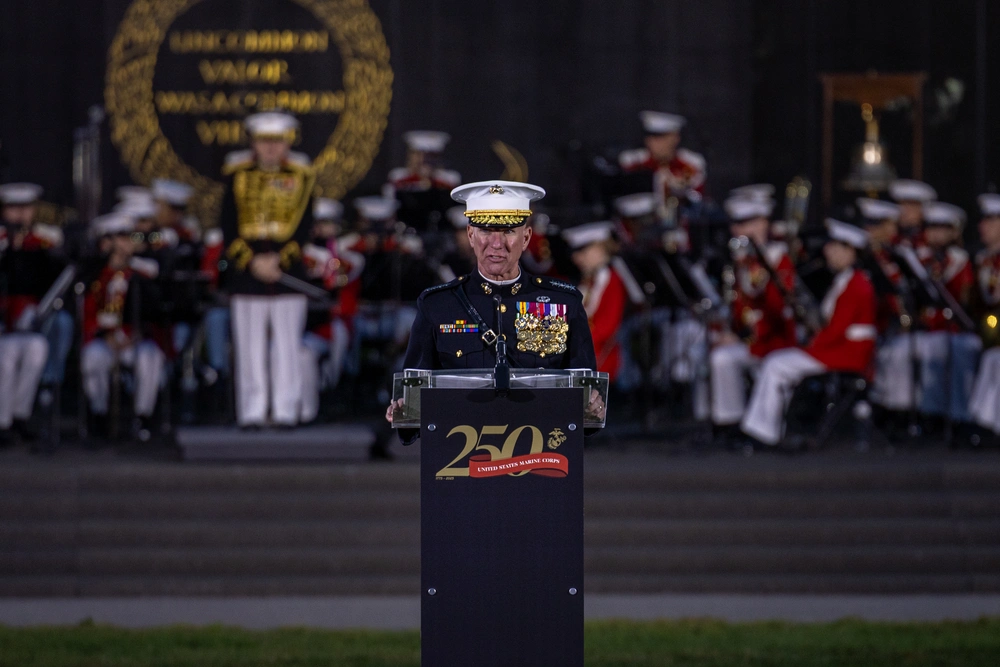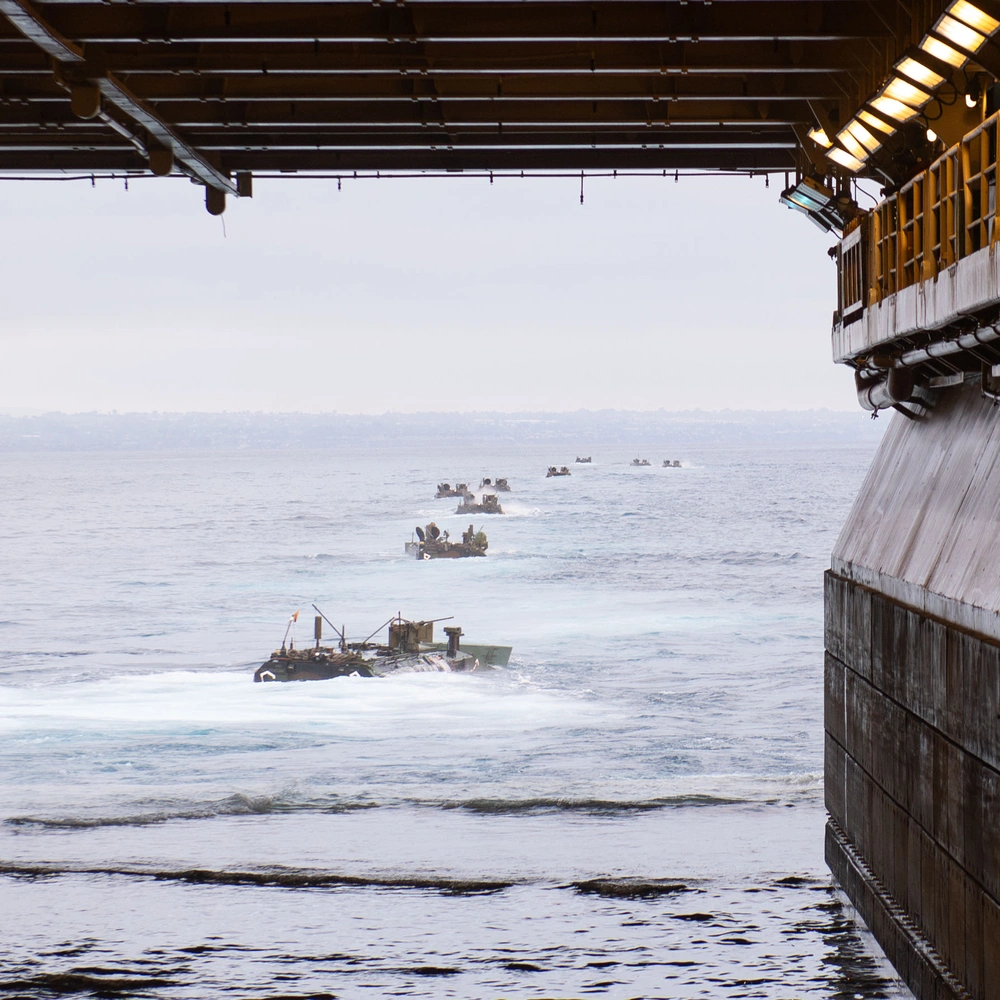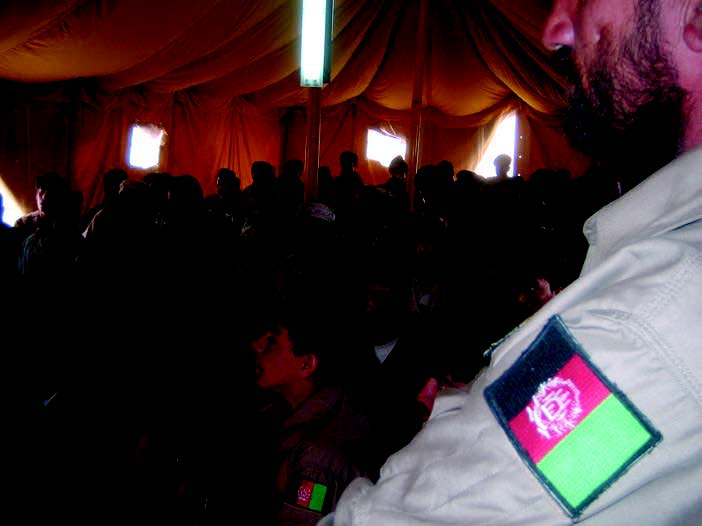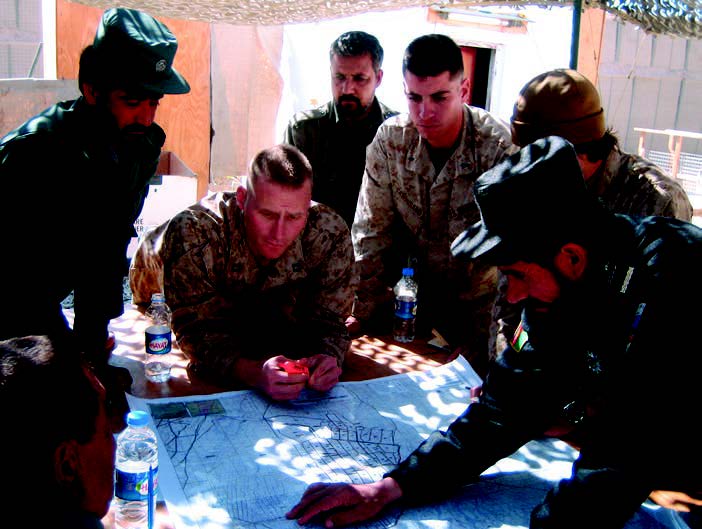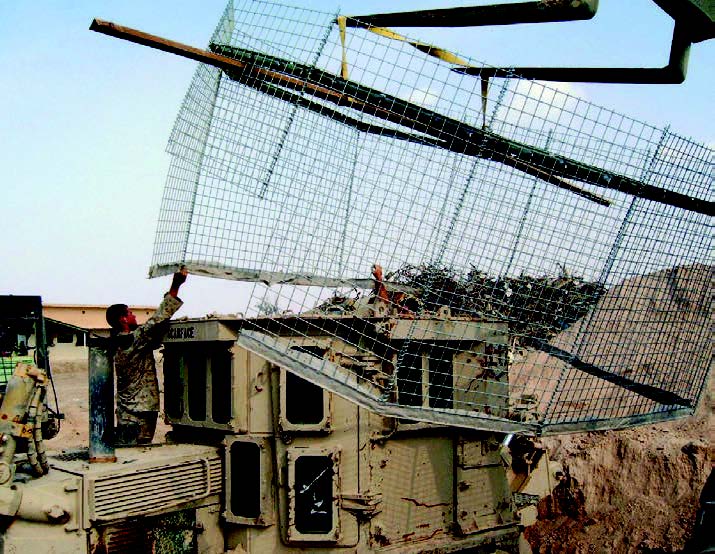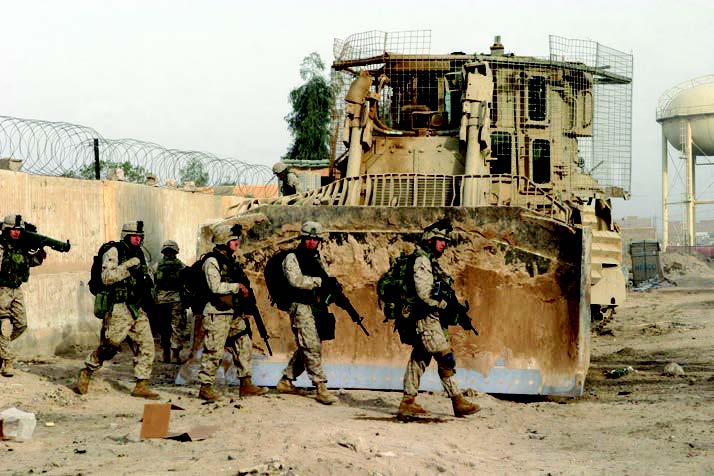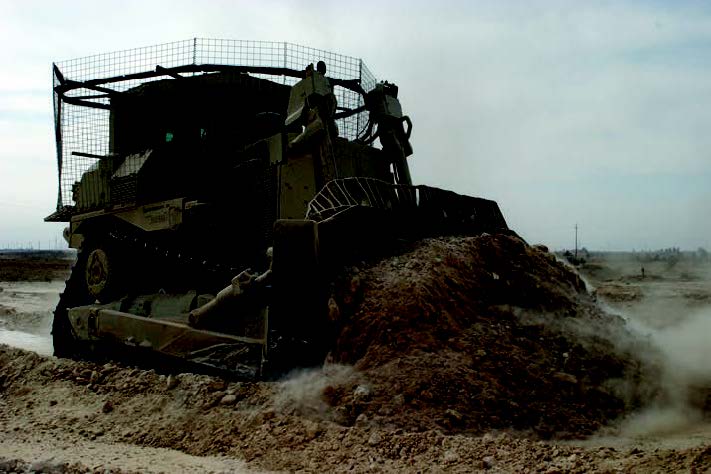MARSOC’s Approach to Warfighting
The authors represent a diverse team from the G-5 Directorate, comprised of active duty, retired, and civilian professionals. Their backgrounds and experience include Special Operations, Intelligence, Hard Target Defeat, Fires, Logistics, Engineering, Communications, Strategy, Plans, and Assessments. This article is a culmination of more than two years of research and collaboration.
Marine Forces Special Operations Command (MARFORSOC) Turns Enduring Challenges into Enduring Advantages.
Positioned globally at the forefront of our Nation’s toughest problems, we see opportunity where others are consumed by obstacles. Our actions, often conducted with partners, shape environments to favor U.S. interests and create Joint Force advantage across the competition continuum. Marine Special Operations Forces (MARSOF) embrace irregular warfare (IW) and are equally adept at direct and indirect approaches to push-back, thwart, disrupt, or degrade pacing and acute threat timelines to a point that adversaries are overmatched and no longer capable or willing to threaten global stability.
The character of warfare has evolved, but the nature of warfare has not. Warfare is a complex interplay of continuous and changing elements. Changing actors in warfare, once limited to nation-states, continue to develop new methods and challenge internationally accepted rules of war. Private military companies now play significant roles, blurring lines with non-state actors and terrorist organizations. These groups introduce new tactics with increasingly accessible technologies, transforming how objectives are achieved through emerging styles of warfare. From swords to nuclear weapons, technology has also transformed battlefields, connecting operators to multiple domains, resulting in new definitions like cyberwarfare that threaten U.S. interests and regional stability. Regardless of these changes and evolutions, lethality will remain the bedrock of our purpose.

We deter adversaries through bolstered partner resilience, building capacity through relationship cultivation founded on trust. This trust is earned and fostered through persistent professional presence and credible actions, yielding the Raiders’ reputation as proficient experts in lethality and a preferred partner. We sense and make sense in dynamic environments, illuminating and characterizing the underpinnings of adversary intent. We posture and position to achieve maximum effects by linking any sensor to any shooter. Should competition escalate to a crisis, our shaping operations deliver asymmetric, indirect, and non-attributable options, setting conditions with expansive sensor-to-shooter ratios that minimize collateral damage and deter adversaries from further escalation. If deterrence fails, our efforts will create conditions for tactical, operational, and strategic advantage in conflict, achieving eternal regret from our enemies and deterring those planning to challenge our resolve.
Marine Forces Special Operations Command’s Strategy, Operating Con-cepts, and Force Design Will Shape Environments to Create Advantage for the United States and Our Allies and Partners.
As MARSOF shaping operations mature and tasks transition to another joint or multi-national force, MARSOF shifts focus to providing decisive actions that support the Joint Force in large-scale combat operations. Combined joint–modular SOF formations like a Special Operations Task Force (SOTF), Marine Special Operations Company (MSOC), and Marine Special Operations Team (MSOT) demonstrate the agility required to meet dynamic global challenges, preserving regional stability, preventing large-scale conflict operations through preparation of environments, and prevailing in war. Creative solutions are critical at the tactical, operational, and strategic levels to produce viable solutions that prepare the Joint Force for high-end conflict. Marine Special Operations Forces will create unignorable dilemmas that interdict, disrupt, and defeat adversaries’ and enemies’ abilities to generate effects across domains at all levels of warfare.

Mission, Value Proposition, and Commander’s Intent
Mission
Marine Forces Special Operations Command recruits, organizes, trains, equips, and deploys task-organized, scalable, expeditionary MARSOF world-wide to accomplish special operations missions assigned by the commander of U.S. Special Operations Command (USSOCOM) or the geographic combatant commanders (GCCs) via the theater special operations commands (TSOC).
Value Proposition
Marine Forces Special Operations Command provides special operations capabilities to solve key operational problems that provide the Joint Force advantage in competition through conflict.
Commander’s Intent
Marine Forces Special Operations Command will deploy forces that integrate at the intersection of SOF and conventional forces battle spaces that provide interoperable and interdependent capabilities to achieve GCC and TSOC priorities and requirements. Marine Special Operations Forces will be forward deployed with SOF-peculiar capabilities, leveraging their unique skills and expertise against pacing and acute challenges to provide Joint Force advantage.
Marine Forces Special Operations Command: “How We Fight”
- Threat-informed.
- SOF-peculiar operations, activities, and investments capable in all domains and forms of warfare.
- Adapting to the evolving operating environment at the speed of war.
- Providing special operations capability to enhance the Marine Corps’ stand-in force (SIF).
- Campaign approach to maximize the effects of special operations, activities, and investments.
- Component concept informed to synchronize MARFORSOC modernization and employment.
Threats and Challenges
Our Nation’s adversaries and enemies have studied the Western democratic ways for the last 40 years. They watched as we prevailed in conflict in all domains and environments. They form and employ their styles of warfare across the span of the competition continuum to exploit perceived gaps and weaknesses using our cultural norms and style of free and democratic governance against us.
Several adversarial states are engaging in a great-power competition that directly threatens U.S. national security. Compounding the security issue, a broader group of states is facing threats to their sovereignty and internal security. These persistent threats and malign activities of our adversaries build regional pressure and create instability and uncertainty that undermine the status quo and threaten our allies’ and partners’ borders, international commerce, and way of life for billions of people.
China’s agenda through the “100 Year Marathon” intends to replace the United States as the global leader and secure deference to its interests at a global scale.
The Chinese Communist Party will attempt to preempt challenges to its reputation and legitimacy, undercutting U.S. influence, intending to fracture our alliances and partnerships and change global norms that favor its authoritarian system. As an imminent threat, the People’s Republic of China (PRC) will press Taiwan on unification, an effort that will create geopolitical challenges not only in the South China Sea but across the globe.
The PRC combines its economic influence with its growing military power to create diplomatic and technological dominance for a grand strategy to strengthen Chinese Communist Party rule with the intent to expand what it considers its sovereign territory. China intends to fully modernize its military by 2035 and develop the People’s Liberation Army into a world-class military by 2049 to achieve its goal of becoming the global hegemon.
China’s pursuit of space dominance, evidenced by increasingly capable and threatening space systems, endangers U.S. national security. China remains a significant and persistent cyber threat to the U.S. Government, private sector, and critical infrastructure networks. China’s cyber espionage and export of surveillance, information, and communications technologies increase the threats of aggressive cyber operations against the United States, with the risk of creating strategic instability by denying the free flow of information in cyberspace.
In a different style, Russia also directly threatens the United States to assert leverage regionally and globally. Russia’s invasion of Ukraine has resulted in unthinkable destruction. Russia remains a resilient and capable adversary across all domains with the intent to project interests and influence globally to undermine the United States, Western alliances, and partnerships. Russia will remain a serious foreign influence threat, continuing to divide the Western alliance’s threatening U.S. global standing by creating instability in the U.S. homeland and far abroad.
Russia will remain a key space competitor despite facing difficulties from the effects of additional international sanctions and export controls, domestic space-sector problems, and increasingly strained competition for program resources within Russia.
Iran will continue to threaten U.S. interests, allies, and influence in the Middle East and intends to entrench its emergent status as a regional power while minimizing threats to the regime and the risk of direct military conflict. Iran will remain a threat to Israel and U.S. allies and interests in the region well after the Gaza conflict. Iran will probably continue arming and aiding its allies to threaten the United States as well as backing Hamas and other nonstate actors who seek to disrupt the peace settlement between Israel and the Palestinians.
Iran is not currently undertaking the key nuclear weapons development activities necessary to produce a testable nuclear device. Since 2020, however, Tehran has stated that it is no longer constrained by any Joint Comprehensive Plan of Action limits, and Iran has greatly expanded its nuclear program, reduced International Atomic Energy Agency monitoring, and undertaken activities that better position it to produce a nuclear device if it chooses to do so. June 2025, Iran’s nuclear facilities Fordow, Natanz, and Esfahan were significantly degraded from strategic U.S. strikes.
The Strategy
The United States 2022 National Defense Strategy (NDS) advances a strategy focused on countering PRC malign activity and influence and strengthening our valued alliances and partnerships. The NDS seeks to prevent the PRC’s dominance of key regions while protecting the U.S. homeland and reinforcing a stable and open international system. Consistent with the 2022 National Security Strategy, a key objective of the NDS is to dissuade the PRC from considering aggression as a viable means of advancing goals that threaten vital U.S. national interests. Conflict with the PRC is neither inevitable nor desirable. Marine Forces Special Operations Command can best support that intent by shaping and preparing the environment through cooperation in strategic competition. This posture and shaping will also best prepare the Joint Force for conflict if deterrence fails and moves to conflict. The United States’ priorities demand the whole government’s options to interact with the PRC that are favorable to our interests and leverage all elements of national power to compete from a position of strategic power.
Integrated deterrence is how we will align policies and activities to sustain and strengthen our ability to compete, tailored to specific regional norms and competitors’ interests. Strong and resilient global alliances and partnerships are our greatest strategic advantage and the center of gravity for our approach. We will strengthen major regional security architectures with our allies and partners based on complementary contributions; combined, collaborative operations and force planning; increased intelligence and information sharing; new operational concepts; and our ability to persistently project the Joint Force globally.
Marine Forces Special Operations Command will support integrated deterrence by leveraging Joint Force functions, posture, capabilities, and net-works, both current and emerging, to deny adversarial influence and freedom of movement. Marine Forces Special Operations Command’s priority will be to increase the lethality and survivability of U.S. platforms and systems that the PRC may seek to target. We will employ and develop operational concepts that connect to and support the joint warfighting capabilities designed to counter PRC aggression. Alliances and partnerships will be strengthened and broadened through joint capabilities demonstrated in multilateral exercises and bilateral training events. The combined development of warfighting technologies, intelligence, information sharing, and combined planning for shared deterrence challenges all support the elements of integrated deterrence protecting the regional status quo.
Through global forward presence and strong relationships with our valued partners, MARFORSOC counters the unrestricted and hybrid forms of warfare, denying their influence and capability by outpacing their tempo and denying them freedom of maneuver in their areas of interest.
Marine Forces Special Operations Command supports integrated deterrence as part of the Joint Force achieves military advantage through the employment of Joint Force capabilities in a campaign approach. Campaigning is the conduct and sequencing of logically linked military activities to achieve strategy-aligned objectives over time. Campaigning initiatives change the environment to the benefit of the U.S. and our allies and partners while denying and disrupting malign competitor activities.
Irregular Warfare
The character and form of war are constantly changing, yet its fundamental nature remains the same. Great-power competition remains a national security challenge—a shift from conducting over two decades of continuous conflict against violent extremist organizations—the requirement for mastery of counterterrorism persists. While sustaining the experience from the last two decades, we will sharpen the additional capabilities required for great-power competition and modern warfare, which includes dynamic and complex conflict.
Irregular warfare is a form of warfare where states and non-state actors campaign to assure or coerce states or other groups through indirect, non-attributable, or asymmetric activities, either as the primary approach or in concert with conventional warfare. The term “irregular” highlights the character of this form of warfare, which seeks to create dilemmas, increase risk, and impose costs on adversaries to achieve a position of advantage. Irregular warfare may employ the threat or use of organized armed violence for purposes of deterrence or compellence to secure an advantage over an adversary. States and non-state actors may conduct IW when they cannot achieve their strategic objectives through nonmilitary activities or conventional warfare.
Marine Forces Special Operations Command supports the IW approach through special operations peculiar operations and activities. This is best accomplished through a service approach, massing the unique IW capabilities of the Marine Corps as part of a SIF.
Irregular warfare, supported by SOF, counters the adversarial forms of unrestricted warfare and hybrid warfare. This modernized approach is applied across the entire competition continuum, where MARSOF shapes and prepares the environment in cooperation, strengthening alliances and partnerships while building regional experience. When needed, MARSOF is postured to support the Joint Force’s transition to conflict by increasing the lethality and survivability of all warfighting functions through expertise in targeting and a thorough understanding of the environment and threat that can only be achieved over years of regional exposure.
Modern Warfare and the Operating Environment
The global dynamics and international relations continue to evolve. Warfare today is conducted with unprecedented complexity and tempo. Technology drives a series of signifcant advantages and threats that must be managed to achieve and maintain the initiative. In the next few years, conflict will occur through miscalculation and miscommunication between states, like previous wars, where the competition to secure rare natural resources, economic advantage, and ideological differences force states’ power and influence to clash and then conflict. The combinations of improved sensors, automation, and artificial intelligence with hypersonic and other advanced technologies will produce more accurate, better-connected, faster, longer-range, and more destructive weapons, primarily available to our existing adversaries, but some within reach of smaller states and non-state actors. The proliferation and distribution of these capabilities create vulnerabilities to our valued allies and partners while threatening our homeland. This environment increases strategic tension and the risk of escalation.
Strategic surprise is a continuous critical concern; the enemy’s most dangerous course of action is modern conflict initiated with a devastating opening salvo of modern weapons across all domains. The enemy will strike not only our military but also those civilian systems and nodes linked to our critical infrastructure simultaneously before we can conduct a counterattack. Because of the range and accuracy of modern weapons, the enemy would not have to reveal an extensive positioning of forces beforehand, providing the opportunity to attack with limited to no strategic warning.
The proliferation of high-speed and exceedingly accurate lethal weapons will call into question the survivability of expensive, high-value platforms and weapons systems that are difficult to quickly replace. One potential mitigation strategy could be the further development and implementation of distributed forces and operations. This is an area where the appropriate employment of SOF can mitigate the threat to the joint platforms by disrupting the enemy’s ability to command and control, sustainment, and movement of those threat weapons systems before they can attack the Joint Forces.
The threat states will continue to maneuver in the irregular space with unrestricted warfare and hybrid warfare employing deniable proxies and private military companies. Although the use of proxies is not new, the way that they are controlled and employed across all domains requires complex solutions, often tailor-made for SOF who thrive in politically sensitive and uncertain environments.
In addition to actual combat operations undertaken by proxy or otherwise deniable forces, this type of conflict will include a spectrum of non-kinetic actions that could be undertaken either independently or in support of a conventional military component, such as attacks on undersea fiber optic cables, cyber operations, GPS jamming and spoofing, and information operations.
Ultimately, the choice of new technologies and the development of war-fighting concepts are likely to depend on the unique threat perceptions, strengths, and vulnerabilities of individual actors. Potential actors range from great and regional powers to non-state actors, such as insurgent and terrorist groups. National and organizational cultures, as well as internal dynamics, will play a role in how adversaries adopt and employ new technologies.
Marine Corps Conventional and Special Operations
To deter and defeat our Nation’s threats, the Marine Corps must synergize the capabilities and capacity of the conventional forces and SOF. This synergy should target the adversary’s ability to influence during competition and the enemy’s capacity to maneuver, sense, and target United States, allies, and partners in conflict.
Conventional Marine forces and MARSOF offer unique capabilities to support combatant commanders. The interdependence between conventional and special operations is supported by the commander’s operational design and priorities. Capitalizing on Force Design, the Marine Corps’ unique force offering of MAGTF and SOF provides a resilient and capable platform for planning, coordinating, and synchronizing operations that increase operational effectiveness.
Improving synergy between conventional forces and SOF requires interoperability, necessitating the integration of Marine Corps processes, capabilities, and units to ensure mission success.
The SIF is an ideal structure to capitalize on the success of MARSOF operations. The SIF with MARSOF are small, lethal, low signature, mobile, distributed units of action that operate across the competition continuum within contested areas as the leading edge of a maritime defense-in-depth designed to intentionally disrupt the plans of potential or actual adversaries.
Depending on the situation, stand-in forces are composed of elements from the Marine Corps, Navy, Coast Guard, SOF, interagency, allies, and partners.
The maritime domain is the nexus of all domains, where the convergence of sea and land forces provides the capability and capacity to persistently campaign to defeat our adversaries and enemies. As a part of the SIF, MARSOF operates in the maritime domain, conducting SOF core activities. This design concept synchronizes the entirety of the combined and Joint Forces and is critical to outmaneuver the overmatch presented by our threats and challenges. Marine Special Operations Forces have proven to be a SOF multiplier by connecting elements of our nation’s resources and the combined multinational alliances and partnerships.
Marine Forces Special Operations Command will achieve operational effects through the appropriate authorities, policies, and permission processes. Department of War issuances of instructions and memoranda related to SOF activities continue to develop and mature based on evolving requirements. Through this lens, MARFORSOC will maximize SOF’s peculiar operations and activities.
Understanding the approval and permissions process is paramount to MARFORSOC’s ability to conduct strategic shaping and reconnaissance (SSR) and multi-domain direct action (MD2A)-related operations. Every mission necessitates appropriate statutory and fiscal authorities with specific Department of War guidance, operational authority, and permissions.
Command relationships: While in the continental United States, SOF is under the combatant command authority of the commander of USSOCOM. When directed, USSOCOM provides U.S.-based SOF to the GCCs. The GCCs normally exercise combatant command administrative control authority of assigned SOF and operational control (OPCON) of attached SOF through the TSOC.
Marine Special Operations Forces deploy following the Joint Staff guidance articulated through USSOCOM via the Global Force Management process. Deployed MARSOFs are transferred for specified periods and support the GCCs who employ SOF with OPCON exercised through their respective TSOCs. Operational control and tactical control are the predominant formal command relationships through which a Joint Force commander exercises command and control of forces. The commander of Marine Forces Special Operations Command retains administrative control of deployed MARSOF.
Supported-supporting relationships provide a means of promoting flexibility and adaptability. There often will be multiple, concurrent supported and supporting commanders, equating to a mutual support relationship requiring clear priorities by the common higher commander. Supporting relationships may prove familiar and desirable in many circumstances, but the application of OPCON and tactical control relationships, driven by a detailed mission analysis, must be carefully considered when appropriate to achieve optimal unity of effort and unity of command in support of Joint Force operations.
Marine Forces Special Operations Command Campaign Plan
Campaign Plan
As MARFORSOC continues to develop and implement its operating concepts, it seeks to accelerate and expand MARFORSOC’s impact in challenging and uncertain operating environments. This framework calls for impactful interoperability across the SOF enterprise and intentional integration with the Joint Force. This campaign plan combines the component’s organizational and operational responsibilities into a single framework that guides MARFORSOC’s overall objectives over the next five-year period. This guidance will empower and inform MARSOF at every echelon to have impactful interactions with its SOCOM components and the larger Joint Force. The overarching guidance of ends (why), ways (how), and means (what) shapes all staff actions and decisions at MARFORSOC. Specifically, this framework details four lines of effort (LOEs) (Capability Development; Positioning; Integration, Interoperability, and Interdependence; and Tactical Lethality and Survivability) to unify effort.
Ends
The “Why.” To pursue favorable outcomes through fully interoperable forces at the battle-space intersection of SOF and conventional forces to best achieve unified action for the Joint Force.
• Joint Force Increased Lethality
• Joint Force Increased Survivability
• Information/Influence Dominance
• Decreased Enemy Ability to Conduct Operations
• Decreased Enemy Ability to Conduct
• Command and Control
Ways
The “How.” This is the methodology of how MARFORSOC achieves our operational approach.
• Joint Warfighting Functions
• SOF Global Disposition
• SOF Access and Placement
• Conventional Force–SOF Integration, Interoperability, Interdependence
• Force Design
• Multi-Domain Approach
• SSR
• MD2A
Means
The “What.” Marine Forces Special Operations Command prioritizes resource investments to achieve desired outcomes.
• Joint Fires Network
• Accelerated Modernization
• Alliances and Partnerships
• SIF
• Bilateral Maritime Mobility
• Autonomous Robotic Combat Systems and remotely crewed Unmanned Systems
• SOF Tactical Sensor Arrays
• Distributed Logistics
LOE 1: Capability Development
Develop and integrate capabilities to support Joint Force objectives by keeping pace with the evolving requirements.
LOE 2: Positioning
Continuous forward deployment of MARSOF that supports (regional/global) Joint Force objectives, enabling continuous deterrence and rapid response through positional advantage.
LOE 3: Integration, Interoperability, and Interdependence
Develop and foster strong integration with the Service and other joint combatant command and Service partners to create unified action across the joint battle space. Develop and foster strong, interoperable capabilities and integrated relationships to create complementary effects across the SOF enterprise of USSOCOM and allies, and partner SOF.
LOE 4: Tactical Lethality and Survivability
Marine Forces Special Operations Command focuses on tactical lethality and survivability to live, survive, fight, and thrive in denied or contested spaces. Marine Forces Special Operations Command identifies the characteristics necessary to fight in the modern operating environment, leveraging lessons from Ukraine, Israel, Karabakh, and USSOF enterprise’s experiences in recent and ongoing operations. Focus is placed on the MSOC level while addressing aspects that affect the SOTF. The MSOC (reinforced) will remain the base unit of action while understating aspects will affect the SOTF.
Marine Forces Special Operations Command Operating Concepts
The design of special operations capabilities unique to the culture of the Marine Corps that can support the Joint Force across the competition continuum requires the development of concepts that manage the development and employment of the force that paces with the national requirements, operating environment, and threats. Currently, MARFORSOC maintains two concepts to provide special operations peculiar effects across the competition continuum.
Strategic shaping and reconnaissance connect activities conducted by special operations elements in cooperation, competition, and conflict to gain awareness of adversarial intentions and capabilities to deter, disrupt, deny, or increase the adversary’s risk. Strategic shaping and reconnaissance encompass a wide array of skills and equipment to provide shaping and influence effects. Effects are achieved through a hybrid approach utilizing selected SOF core activities and programs applied through special and intelligence operations, direct and indirect actions, and the persistent development of ally and partner relations.
The SSR concept of employment coordinates and synchronizes MARSOF elements conducting SSR, possessing the capability to operate in the competition continuum, and transition to conflict if deterrence fails. The elements employ capabilities that provide target analysis against networks in competition and conflict. Emphasis is placed upon the confidence to find, follow, and fix strategic mobile targets, critical nodes, and infrastructure. This includes assessments of weapons-of-mass-destruction-related networks and nodes to determine intent and provide the supported commander with current and detailed collections against a specific network, facility, or individual.
Strategic shaping and reconnaissance may include gathering information on cross-domain activities or the environment, such as the meteorological, hydrographic, geographic, cyber, space, and characteristics of a particular area. Strategic shaping and reconnaissance may also include assessments of those critical threats against the Nation’s interests.
Multi-Domain Direct Action represents MARFORSOC’s capability to orchestrate and deliver effects through the execution of joint fires or application of sabotage techniques across multiple domains that integrate cyber activities, non-kinetic disruptions, and precise lethality. This approach allows for the coordination of small-scale strikes to deliver high-value effects during crises and conflicts. Multi-domain direct action ensures that the Joint Force maintains an advantage by providing options for rapid and targeted actions.

Conclusion: Marine Forces Special Operations Command’s Theory of Success
In Conclusion, MARFORSOC’s theory of success focuses on providing impact to an adversary by delivering multiple complex problems that they must address to achieve their national objectives. This approach creates both strategic doubt and operational friction for the adversary while strengthening our valued allies and partners. “How We Fight” imposes costs on the enemy by presenting significant challenges that cannot be ignored. Capitalizing on the persistent MARSOF global employment, the low signature elements operating in politically sensitive and uncertain environments deny adversarial freedom of movement and their ability to influence. Shaping and preparing in competition increases Joint Force lethality and survivability, ensuring victory in conflict.
Notes:
1. A key operational problem is a concise statement that identifies a crucial deficiency or challenge hindering the achievement of desired military objectives.


